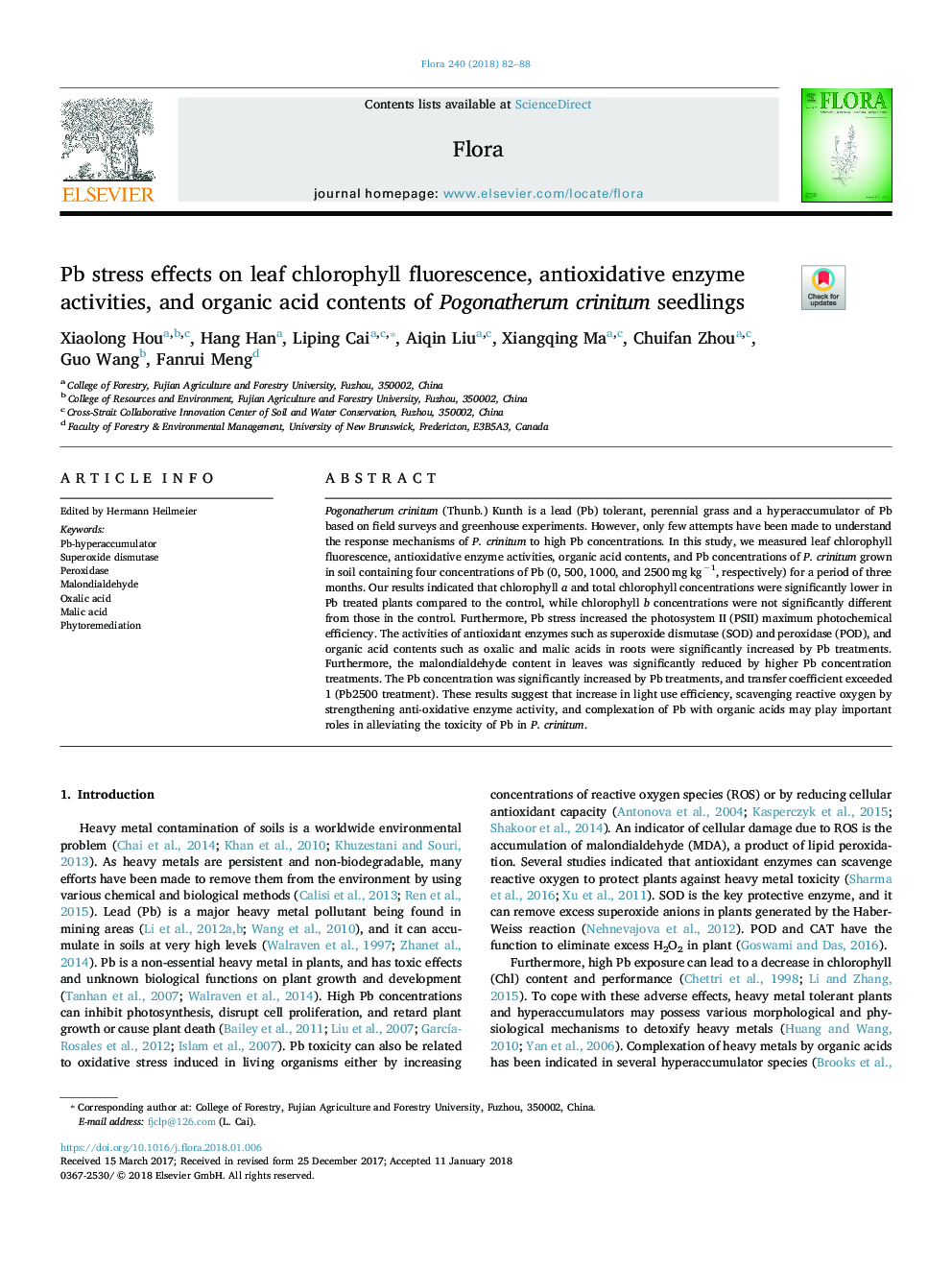| Article ID | Journal | Published Year | Pages | File Type |
|---|---|---|---|---|
| 8470188 | Flora - Morphology, Distribution, Functional Ecology of Plants | 2018 | 7 Pages |
Abstract
Pogonatherum crinitum (Thunb.) Kunth is a lead (Pb) tolerant, perennial grass and a hyperaccumulator of Pb based on field surveys and greenhouse experiments. However, only few attempts have been made to understand the response mechanisms of P. crinitum to high Pb concentrations. In this study, we measured leaf chlorophyll fluorescence, antioxidative enzyme activities, organic acid contents, and Pb concentrations of P. crinitum grown in soil containing four concentrations of Pb (0, 500, 1000, and 2500â¯mgâ¯kgâ1, respectively) for a period of three months. Our results indicated that chlorophyll a and total chlorophyll concentrations were significantly lower in Pb treated plants compared to the control, while chlorophyll b concentrations were not significantly different from those in the control. Furthermore, Pb stress increased the photosystem II (PSII) maximum photochemical efficiency. The activities of antioxidant enzymes such as superoxide dismutase (SOD) and peroxidase (POD), and organic acid contents such as oxalic and malic acids in roots were significantly increased by Pb treatments. Furthermore, the malondialdehyde content in leaves was significantly reduced by higher Pb concentration treatments. The Pb concentration was significantly increased by Pb treatments, and transfer coefficient exceeded 1 (Pb2500 treatment). These results suggest that increase in light use efficiency, scavenging reactive oxygen by strengthening anti-oxidative enzyme activity, and complexation of Pb with organic acids may play important roles in alleviating the toxicity of Pb in P. crinitum.
Related Topics
Life Sciences
Agricultural and Biological Sciences
Ecology, Evolution, Behavior and Systematics
Authors
Xiaolong Hou, Hang Han, Liping Cai, Aiqin Liu, Xiangqing Ma, Chuifan Zhou, Guo Wang, Fanrui Meng,
